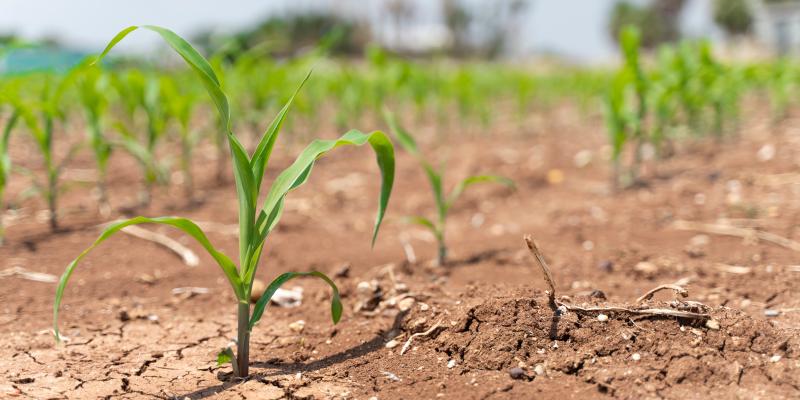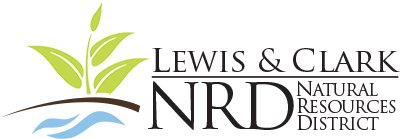LEWIS AND CLARK NRD ENCOURAGES PRODUCERS TO USE BEST MANAGEMENT PRACTICES WHEN APPLYING FERTILIZER

After a snowy winter, farmers are heading out to fields preparing for spring planting. For some, that means tilling and fertilizing fields. When applying fertilizer, knowing what nutrients remain in the soil from last year could save time and money. If you will be planting corn, sampling for soil nutrient content, especially nitrogen, is strongly advised. Over application of fertilizer can be avoided, and appropriate rates can be determined using the results of soil fertility sampling.
Nitrogen is an essential nutrient for crop production; however, outside of the root zone, nitrogen contaminates water supplies. Knowing and crediting what is already in the soil and available to growing crops saves money in fertilizer costs and protects groundwater from nitrate leaching. Fertilization programs should account for multiple factors when determining the appropriate nitrogen application rate and method.
Soil and water analysis provides the information required to determine appropriate application rates and ensures nitrogen utilization is as efficient as possible. The University of Nebraska has determined that nitrogen concentrations of 1 part per million (ppm) in 12 inches of irrigation water can account for 2.7 pounds of nitrates per acre. A concentration of 10 ppm applied to 160 acres is the equivalent of more than two tons of nitrogen fertilizer; at $550 per ton, this would save over $1100 in fertilizer cost on that field. In addition to economic benefits, crops that are actively growing remove nitrogen from the water and help reduce leaching past the root zone to the groundwater. It should also be noted that the bulk of irrigation occurs when the plant is in most need of nutrients, including nitrogen.
In some areas, nitrate concentrations in groundwater exceed the federal maximum contaminant level (MCL) of 10 parts per million (ppm) for drinking water. When these situations occur, Nebraska Natural Resources Districts (NRDs) must take action to protect and improve groundwater quality by implementing groundwater management plans. When a groundwater quality protection area is identified, NRDs require nitrogen accounting, including soil and water analysis, in addition to best management practices to reduce essential nitrate contamination. Soil sampling is used to determine residual nitrogen and is recognized as an important tool for fertilizer management. Irrigation water analysis carries as much value, especially in areas where precipitation does not typically meet crop water needs. Soil and irrigation water analysis can reduce fertilization costs and benefit producers.
When preparing for the upcoming crop year, LCNRD urges you to use soil and irrigation water sampling to evaluate the nutrients available to your crop and adjust recommended fertilizer rates to account for what is already in the soil and water.
